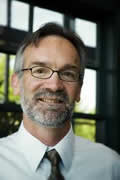River Bank Filtration: Design, Purpose, Experience
|
|
Aired: June 19, 2013 from noon to 1pm Eastern Induced recharge near rivers is one way to produce reliable yields in alluvial aquifer systems. This approach to groundwater extraction has many advantages and a few regulatory challenges. This webinar will discuss the history of river bank filtration (RBF) systems in the United States and in Europe and present the issues that well field developers, regulators, and design/modelers need to think about as they site and use these system for their clients. The webinar outline will be as follows: - History of RBF |
|
|
Meet the Presenter: Jack Wittman, National Director of GeoSciences, Layne Christensen Company Dr. Jack Wittman is the National Director of GeoSciences for Layne Christensen Company, the largest water supply development company in the world. Over the past 25 years he has worked on nuclear waste isolation, agricultural impacts to shallow aquifers, climate change impacts, and invented new methods for modeling surface and groundwater interactions. In a variety of positions Dr. Wittman has helped to develop water policy in several states.
|
Presentation slides (in pdf) View the archived webinar Comments and feedback (welcome anytime) | |
Tips for saving paper when printing pdf presentations:
To print multiple pages on each sheet of paper, download the file, click on "File" then "Print". Under Page Handling, select Page Scaling, then print multiple pages per sheet (i.e., 6 or 9 pages per sheet).
 Indiana Watersheds Webinar Series Webinars to Strengthen Watershed Management in Indiana
Indiana Watersheds Webinar Series Webinars to Strengthen Watershed Management in Indiana 

